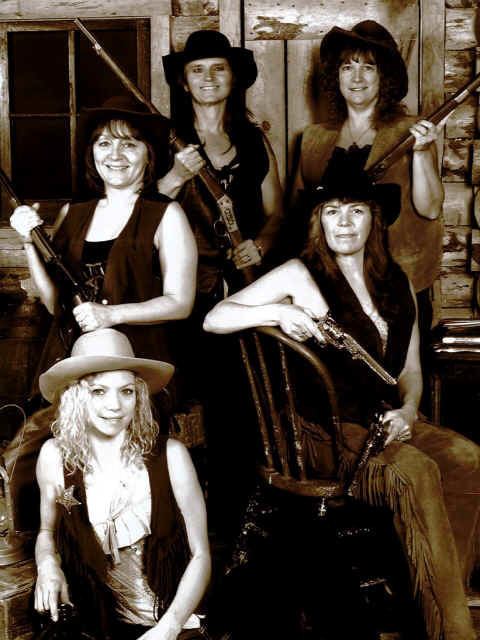Founded 1877 Area 2,072 km² | Named for John Lawrence Congressional district At-large Website www.lawrence.sd.us Population 24,910 (2013) | |
 | ||
University Black Hills State University Rivers Whitewood Creek, False Bottom Creek, Bear Butte Creek Points of interest Terry Peak, Mystic Miner Mountain, Adams Museum & House, Mount Moriah Cemetery, Nuttal & Mann's | ||
Lawrence County is a county located in the U.S. state of South Dakota. As of the 2010 census, the population was 24,097. Its county seat is Deadwood.
Contents
- Map of Lawrence County SD USA
- History
- Geography
- Major highways
- Adjacent counties
- National protected area
- 2000 census
- 2010 census
- Cities
- Census designated places
- Ghost towns
- Townships
- References
Map of Lawrence County, SD, USA
Lawrence County is coextensive with the Spearfish, SD Micropolitan Statistical Area, which is also included in the Rapid City-Spearfish, SD Combined Statistical Area.
History
Lawrence County was created January 11, 1875, and organized in 1877. The county was named for "Colonel" John Lawrence who came to the county as first treasurer in 1877. Lawrence had previously served in the Dakota Territorial Legislature, as a Sergeant at Arms for the United States House of Representatives, and a US Marshal for the Dakota territory. After retirement he continued to act as county road supervisor and as an election judge. The title "Colonel" was honorary, bestowed by the governor of the Dakota Territory.
Geography
According to the U.S. Census Bureau, the county has a total area of 800 square miles (2,100 km2), of which 800 square miles (2,100 km2) is land and 0.3 square miles (0.78 km2) (0.03%) is water.
Major highways
Adjacent counties
National protected area
2000 census
As of the census of 2000, there were 21,802 people, 8,881 households, and 5,559 families residing in the county. The population density was 27 people per square mile (11/km²). There were 10,427 housing units at an average density of 13 per square mile (5/km²). The racial makeup of the county was 95.79% White, 0.23% Black or African American, 2.18% Native American, 0.33% Asian, 0.05% Pacific Islander, 0.33% from other races, and 1.08% from two or more races. 1.82% of the population were Hispanic or Latino of any race. 36.0% were of German, 12.0% Norwegian, 9.0% English and 7.5% Irish ancestry according to the 2000 census.
There were 8,881 households out of which 28.80% had children under the age of 18 living with them, 51.00% were married couples living together, 8.50% had a female householder with no husband present, and 37.40% were non-families. 29.60% of all households were made up of individuals and 11.50% had someone living alone who was 65 years of age or older. The average household size was 2.33 and the average family size was 2.89.
In the county, the population was spread out with 23.10% under the age of 18, 13.70% from 18 to 24, 25.40% from 25 to 44, 23.10% from 45 to 64, and 14.60% who were 65 years of age or older. The median age was 37 years. For every 100 females there were 96.80 males. For every 100 females age 18 and over, there were 93.30 males.
The median income for a household in the county was $31,755, and the median income for a family was $40,501. Males had a median income of $30,098 versus $19,679 for females. The per capita income for the county was $17,195. About 9.50% of families and 14.80% of the population were below the poverty line, including 15.70% of those under age 18 and 9.10% of those age 65 or over.
2010 census
As of the 2010 United States Census, there were 24,097 people, 10,536 households, and 6,181 families residing in the county. The population density was 30.1 inhabitants per square mile (11.6/km2). There were 12,756 housing units at an average density of 15.9 per square mile (6.1/km2). The racial makeup of the county was 94.4% white, 2.0% American Indian, 0.7% Asian, 0.4% black or African American, 0.5% from other races, and 2.0% from two or more races. Those of Hispanic or Latino origin made up 2.5% of the population. In terms of ancestry, 44.5% were German, 13.7% were Irish, 13.4% were English, 11.4% were Norwegian, and 4.4% were American.
Of the 10,536 households, 24.0% had children under the age of 18 living with them, 46.6% were married couples living together, 8.1% had a female householder with no husband present, 41.3% were non-families, and 33.2% of all households were made up of individuals. The average household size was 2.19 and the average family size was 2.77. The median age was 41.0 years.
The median income for a household in the county was $42,356 and the median income for a family was $60,209. Males had a median income of $38,933 versus $28,649 for females. The per capita income for the county was $25,465. About 8.4% of families and 15.3% of the population were below the poverty line, including 15.8% of those under age 18 and 8.1% of those age 65 or over.
Cities
Census-designated places
Ghost towns
Townships
The county is divided into one township: St. Onge; and two areas of unorganized territory: North Lawrence and South Lawrence.
